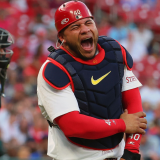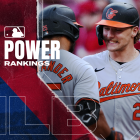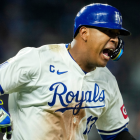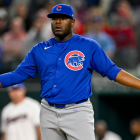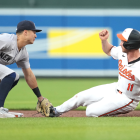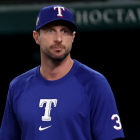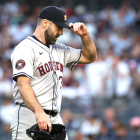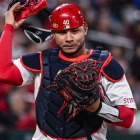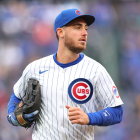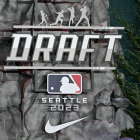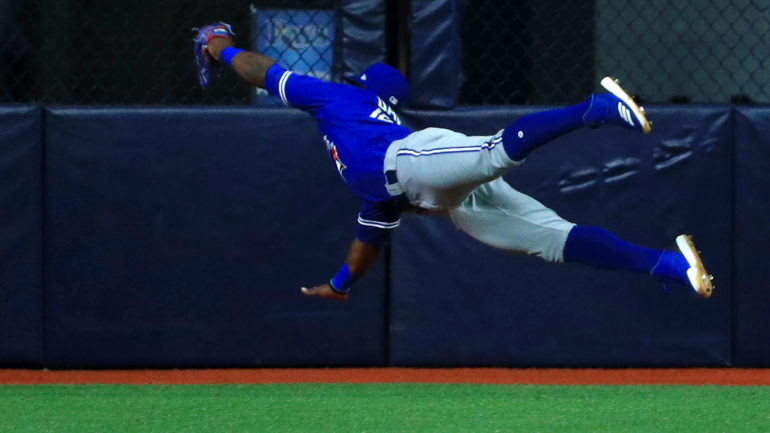
CBS Sports recently published its ranking of the top 50 MLB free agents available this offseason. American League Most Valuable Player Award recipient Aaron Judge took the top spot, with ace Jacob deGrom checking in at second. A helping of high-quality shortstops filled out the top five: Carlos Correa, Trea Turner, and Xander Bogaerts.
But the offseason isn't just about the tippy-top free agents. As we wrote last winter: "the stars get all the headlines and all the biggest contracts, but everyone loves finding a bargain." Indeed, deal-seeking becomes a national pastime the day after Thanksgiving, which is why we're here today to introduce this year's set of our favorite under-the-radar free agents. Last year, we predicted that Jakob Junis, Luis Garcia, and Josh Harrison would give their new teams more production than they paid for. Two tries ago, we hit on Anthony DeSclafani.
Who might emerge during the 2023 season? Here's our short shopping list. Do note that the players are listed in alphabetical order and that we try to avoid the super-obvious names. If you want a "bargain free agents" list that includes Joey Gallo or Cody Bellinger types, there are plenty out there; we play on the "hard" game mode here, folks.
1. Brad Boxberger, RHP
Is it cheating to include a pitcher with a 132 ERA+ during the Pandemic Era? Maybe so, but we make the rules here, not you. Besides, Boxberger recently passed through waivers untouched, forcing the Brewers to pay him a $750,000 buyout on his $3 million club option. You read that right: neither the Brewers, nor any other team for that matter, were willing to pay him $3 million for his services next season. This at a time when José Ureña is getting a $3.5 million guarantee. Make it make sense.
We'll concede that Boxberger employs an unusual and perilous formula for success. Last season alone, he ranked in the 40th percentile in whiff rate; the third percentile in chase rate; and the 20th percentile in walk rate. In English: he's not a big bat-misser, or zone-expander, and he's prone to issuing his share of free passes. He's nevertheless maintained a shiny ERA by suppressing quality of contact with a three-pitch mix: low-90s heater, changeup, and slider.
It's not the sexiest or most reliable profile, and it's one that could very well fall apart. Boxberger has enjoyed a good deal of success over his last 146 innings, however, and it shouldn't surprise anyone if he proves to be worth more than $3 million in 2023.
2. Yu Chang, UTL
Chang played for four different teams last season: the Guardians, Pirates, Rays, and Red Sox. Each of those team's front office has an analytical bent to them, so it should come as no surprise that there's underlying statistical reason to think Chang has more to offer than what he's provided thus far in the form of his career 76 OPS+.
Sure enough, Chang's ball-tracking data shows that he barreled a higher percentage of batted balls than the likes of Nolan Arenado, Francisco Lindor, Luis Robert, and Bobby Witt Jr. Additionally, he hit the ball 95 mph or harder more or as often as Jeremy Peña, Adley Rutschman, and Mark Canha. Those are all good hitters.
Chang himself wasn't a good hitter last season, unfortunately, but we have to believe he'll be rewarded more often for making quality contact heading forward. It's not like he has to turn into a middle-of-the-order force to have value, either -- his ability to ping-pong around the field means that even a league-average bat would make him a valuable addition to most any roster.
3. Jonathan Davis, CF
Let's be upfront about something: Davis can't hit. In 171 career big-league games, he has a .185/.291/.245 slash line, good for a 51 OPS+. He has a patient approach and a maximum exit velocity that checks in around league-average, but he's not a real threat to burn mistakes or to bat higher than the bottom-third of a lineup.
Nevertheless, we're including Davis for two reasons.
One, Davis is an outstanding defensive center fielder. Statcast tracks this measure called "success rate," or, basically, how often the defender makes the play. Davis' success rate was 92 percent; that may not sound impressive on its own, but his estimated success rate was 84 percent. That eight percentage point difference was the second best in the majors among center fielders, trailing only Ben DeLuzio.
Two, the center-field market is atrocious. If you're not signing Brandon Nimmo or Kevin Kiermaier (or, we suppose, Bellinger), you could do a lot worse than signing Davis to bat ninth against lefties and to pinch-run and/or play defense in late-and-close situations.
While we wouldn't advise expecting much of anything from Davis' bat -- he's an outmaker on both sides of the ball -- it's possible that a team lucks into a season where his groundballs find an extra hole or two per week, allowing him to post a much better batting line than expected. Again, we wouldn't count on it -- the appeal here revolves around his defense in light of the scarcity of the market -- but it's possible.
4. Carlos Estévez, RHP
We originally included Estévez in the top 50 free-agent rankings, but he was removed to make some room for a few late option calls. We never want to waste copy if we can avoid it, so here's the part where we reprint what we wrote at the time:
It stands to reason if you can pitch well in Colorado, you can pitch even better elsewhere. Estévez is a big, broad righty with a delivery that looks like someone tried to recreate Ernesto Frieri's from memory. He generated more than 20 percent whiffs on all three of his pitches last season: an upper-90s fastball, a gyro slider, and a changeup. Even so, the Rockies had him chucking his heater more than 70 percent of the time. A different organization would likely ask that he spread the love to his offspeed pitches more frequently, a change that could lead to a performance uptick.
Recycling is good, folks. Estévez might be, too.
5. Pierce Johnson, RHP
Another top-50 original who was bumped off the list. You know what that means.
Johnson, limited by forearm trouble to 15 appearances last season, has the 13th highest strikeout rate among relievers (min. 100 appearances) since returning from the NPB in 2020. He's struck out nearly 33 percent of the batters he's faced by spamming his sweeping curveball and mixing in his mid-90s fastball. Johnson does have a tendency to hand out free passes, and that vice could limit him to a middle-relief role heading forward. He's a potential good value signing.
That's the last time we'll reuse material in this piece. We promise.










